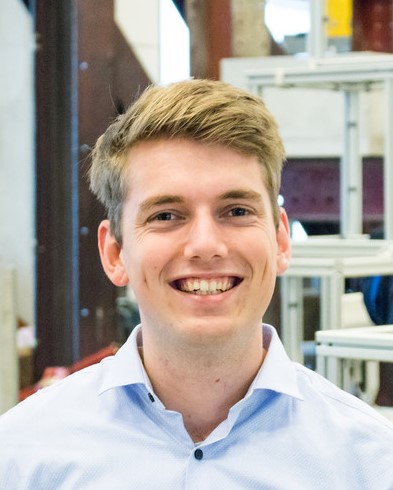A photorealistic simulation of dynamic natural light for perception in VR

A photorealistic simulation of dynamic natural light for perception in VR
11 December 2022
Part of the IntelLight+ project
Meet Sietse de Vries (26). Sietse is currently an EngD trainee in the Eindhoven Engine project Intellight+.
Source: commons.wikimedia.com (edited by K. Chamilothori)
The IntelLight+ project focuses on human-centric lighting. It takes an integrative approach to developing algorithms to infer and even predict user context to accommodate user needs and preferences. In his sub-research, Sietse is working on a photorealistic simulation of dynamic natural light for perception in virtual reality (VR). Light is an environmental factor that directly and indirectly impacts human health and well-being through processes affecting circadian rhythm, arousal and alertness, as well as comfort and visual interest. Current insights in lighting research show that eyes need high (blue-enhanced) light levels in buildings to support a healthy circadian rhythm and the associated good sleep. However, when delivered by traditional lighting fixtures, these high light levels challenge visual comfort and user acceptance. At the same time, recent studies suggest that ambient light distributions can affect attention, visual interest, alertness and relaxation. The question that emerges is whether these positive psychological effects, driven by spatial and temporal dynamics of illumination, could be used to increase the user acceptance of lighting solutions aimed at supporting circadian effects.
Applicability of dynamic light in nature
Theories from environmental psychology suggest that nature and natural elements can be restorative for humans. The biophilia hypothesis explains this via humans’ innate and evolutionary connection with nature. By recreating the spatial and temporal characteristics of natural light patterns with artificial lighting, the positive qualities of daylight and the restorative effects of nature may be brought indoors. As a novelty, the applicability of dynamic light patterns that are prevalent in nature, such as dappled light, is being researched.
“The tool will provide researchers with a fast and flexible method to conduct experiments on the perception of such patterns in a space independent of location or external conditions.”
Sietse de Vries
Simulation tool for photorealistic indoor environments
To identify the impact and perception of certain dynamic patterns of natural light, experiments are necessary. Due to the complexity of controlling natural light during such experiments, immersive virtual environments have been identified as a suitable alternative. The goal of the EngD project is to create a simulation tool that generates photorealistic indoor environments with customizable dynamic patterns of natural light to be viewed using virtual reality headsets. The tool will provide researchers with a fast and flexible method to conduct experiments on the perception of such patterns in a space independent of location or external conditions.
Dappled natural light
Recently, proof of concepts of all parts of the simulation tool have been produced, allowing early testing. The current focus is on optimizing simulation efficiency and closely reproducing the properties of dynamic patterns of dappled natural light. When finished, the simulation tool will facilitate research that is needed to advance the development of innovative lighting scenarios that maximally benefit human functioning, ensuring high visual comfort and satisfaction and support for circadian and restorative effects.